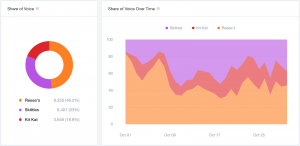— August 21, 2019
Discussing and understanding CSM compensation is a critical responsibility of any customer success leader. After all, your CSMs are working with customers daily to grow your business and they should be compensated in relation to their goals and output. When it comes to CSM compensation plans, there isn’t one “right way” to structure things. Successfully executing a well-planned CSM compensation strategy depends on who owns revenue-generating KPIs and milestones related to a customer account, such as renewals, upsells, and new user expansions.
As you structure your CSM compensation plans, here are three best practices to keep in mind:
1. Get input from sales, marketing, product, and your executive team when deciding on your CSM engagement model.
The role of a SaaS industry CSM has become increasingly complex because it covers so many different parts of the customer lifecycle. These days, CSMs are brought in during sales conversations to answer questions and map out customer journeys, but they’re also heavily involved during onboarding, implementation, ongoing support, and expansion conversations. Because the CSM role touches so many parts of a customer relationship, building the engagement model requires input from other departments and leaders.
If you’re setting up a new compensation plan (or simply evaluating your current one), meet with your counterparts on other teams, including sales, marketing, and product. This conversation is especially important to have with your sales leader counterparts. While sales reps might receive a commission for new logo bookings, many customer success organizations are set up to pay out commission or a bonus for expansions and renewals. It’s important for both sides to be on the same page early on so there are no crossed wires or confusion down the road when actual compensation is at risk.
2. Make sure outside client metrics are clearly defined for all CSMs, if applicable.
Sometimes, CSM compensation plans involve account metrics that fall outside the typical revenue-generating numbers like renewal or expansion. If your team rewards CSMs financially for completing customer projects on time, reaching NPS goals, or other more qualitative metrics, make sure these are clearly defined and understood by your entire team. Team members will always work harder to meet goals for which they are rewarded financially, which can help increase customer satisfaction over time. Additionally, you should try to keep all of your CSMs on the same compensation plan, if their roles are similar. This will help avoid confusion and bolster team mentality.
3. Be transparent with CSMs, always.
It’s okay for compensation plans to be dynamic, changing strategies. Customer success leaders should be constantly evaluating and grading current plans to see where changes should be made. Just remember, however, that when changes are made there should be complete transparency between leadership and CSMs themselves. This includes any new measured KPIs and metrics, any changes to compensation or bonus structure, and the reasoning behind why these changes were made. Having transparent, honest conversations with CSMs shows them that you are in their corner and are making decisions that will benefit both them personally and your customers in the long-term.
Stay on top of CSM compensation with data
When it comes to building a successful CSM compensation plan, organization, data, and honesty are key. Having frank, open conversations about metrics and compensation fosters strong relationships and a sense of honesty on your team.
Business & Finance Articles on Business 2 Community
(32)
Report Post




